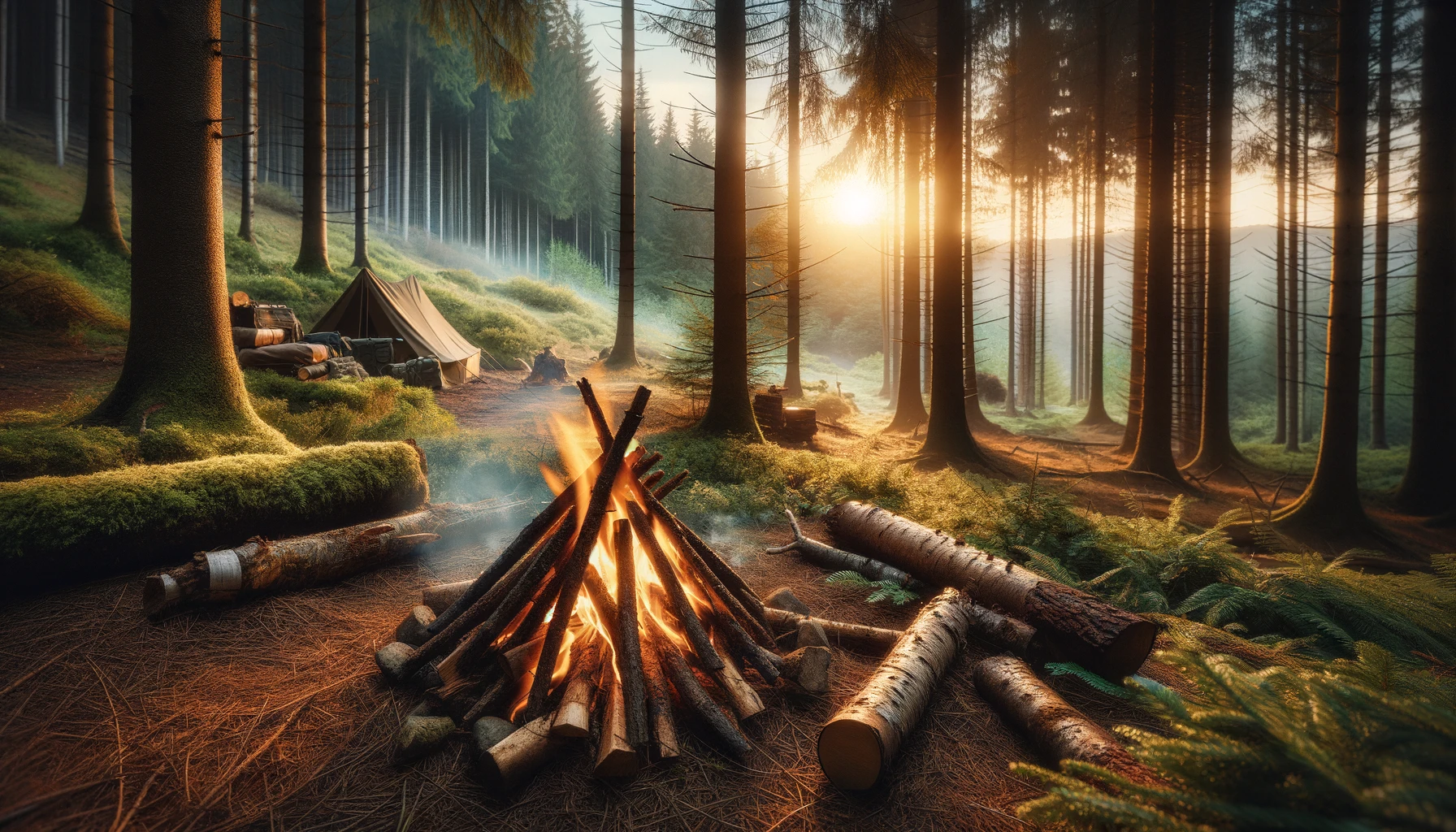
Table of Contents
As the hues of twilight drape the vast expanse of the wilderness, the need for ‘The Proper Way to Start a Fire’ becomes undeniably clear. More than just a source of warmth, fire symbolizes survival, culinary prowess, and the bonds forged in its glow. The heart of a hunter’s camp pulses with the rhythm of a roaring campfire. But mastering this ancient elemental force begs the question: how can one wield its power with both safety and efficiency?
Lost? With the dark sky overhead, the brightness of a fire serves as a signaling device, visible from significant distances, guiding rescuers your way.
Questioning the purity of that clear stream? Boiling can eliminate pathogens, making it safe to quench your thirst.
Beyond light and warmth, fire is a deterrent, keeping curious predators at bay.
The thrill of the hunt is followed by the joy of the feast. Fire turns raw game into delectable meals.
Find a clear area, away from bushes or low branches. Also, consider wind direction to avoid smoke-filled eyes and ensure efficient burning.
A depression in the ground, lined with rocks, helps concentrate the heat and reduces the fire’s spread.
Constructing makeshift barriers using logs or equipment can keep gusty winds from disrupting your flames.
From dry leaves to specialized fire starters, your choice of tinder can significantly influence ignition speed.
Twigs, pine cones, and bark — these bridge the gap between the tinder and the main logs.
Dense woods like oak burn longer, while softwoods like pine catch fire quickly but burn out faster.
Not carrying wood? Learn to identify dead trees and fallen branches, ensuring a sustainable and efficient fuel source.
A good old matchstick is reliable but remember, waterproof matches or a match container can be a game-changer in damp conditions.
It might be ancient, but it’s trusty. A couple of strikes and you’re on your way.
Butane lighters are easy, yet always keep a spare. You wouldn’t want to run out of fuel.
Yes, magnifying glasses or even eyeglasses can harness the sun’s power to create fire. Just ensure it’s a sunny day!
Ensure good airflow. While a fire needs oxygen, a gusty wind can scatter it.
Rotate your logs, ensuring even burning and consistent warmth.
If sleeping, keep the fire small or have shifts to ensure it remains under control.
Always drench thoroughly. A seemingly dead fire can hide embers beneath.
No water? Burying the fire with dirt or sand can deprive it of oxygen, effectively extinguishing it.
Always touch-test (carefully!) to ensure no heat remains.
Harnessing the power of fire, especially in the proper way to start a fire, melds art with science. For hunters, fire offers not only a tool of utility but also a source of comfort. Yet, it’s imperative to understand that with such potent power comes immense responsibility. Though fire can be a benevolent companion, it can swiftly turn adversarial if not approached with due caution.
Q1: Are there fire-starting tools I can buy?
A: Absolutely! There are magnesium fire-starters, fire striker rods, and even compact firestarter kits available in most outdoor shops.
Q2: What if the wood is damp?
A: Look for standing dead trees. Their wood, especially the inner parts, is usually drier. If all else fails, certain fire-starters are designed to work even in damp conditions.
Q3: How safe is it to cook over an open flame?
A: Quite safe, if done right. Ensure the wood you’re burning isn’t toxic and let the fire burn down to coals for even heating.
Q4: How can I practice fire-starting safely?
A: Start in a controlled environment, like your backyard or a designated campfire spot in a local park.
Q5: Can I use fire to signal during the day?
A: While harder to see in daylight, the smoke from green branches or leaves can create visible signals. Remember, three puffs of smoke are a universal distress signal.
Visit Also: Mastering the Art of Hunting Techniques: From Stealth to Strategy
For decades, the 3–9×40 rifle scope has been one of the most iconic optics used…
Tuning a compound bow can feel intimidating, especially if you’re new to archery or don’t…
The world of compound bows is filled with innovation, craftsmanship, and brand loyalty. Among all…
A hunting rifle is one of the most trusted tools in the field. It doesn’t…
Upland bird hunting especially for pheasant and quail is one of the most rewarding pursuits…
A hunting rifle is more than just a tool it’s a trusted companion in the…
This website uses cookies.